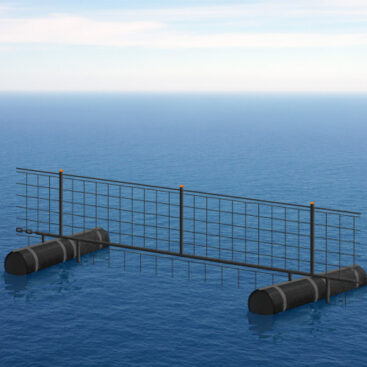- Sales: +38(048)737-37-51
- Info: +38(067)482-99-50
Floating Security Barrier
A floating protective barrier is a floating protective structure installed on water to restrict or control access, prevent intrusion, and enhance security in vulnerable or high-risk areas.
It is typically made of modular floating units (buoys, pontoons, or linked segments) connected by strong cables, nets, or chains. The barrier is designed to float on the water’s surface while maintaining stability and resistance against waves, currents, and impacts. Some models are reinforced with steel or high-strength polymers to withstand collisions or cutting attempts.
The core purpose of floating security barrier is:
- Maritime security: Prevents unauthorized boats, ships, or divers from entering restricted zones such as ports, naval bases, oil terminals, or offshore platforms.
- Critical infrastructure protection: Used to secure dams, bridges, power plants, and other water-adjacent facilities against threats.
- Event or area control: Deployed temporarily during large events, military operations, or emergencies to control access on waterways.
- Environmental and safety function: Can also help mark safe navigation zones, prevent accidents, or serve as an additional physical barrier for safety.
In short, a floating security barrier is a first line of defense on water, ensuring controlled access, protecting critical infrastructure, and enhancing overall maritime security.



